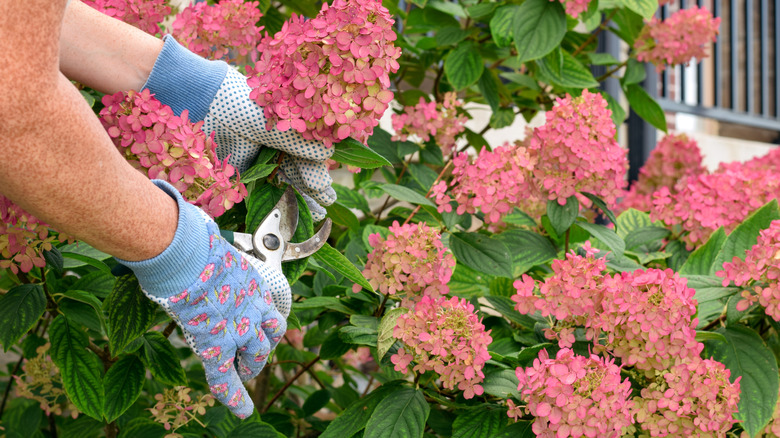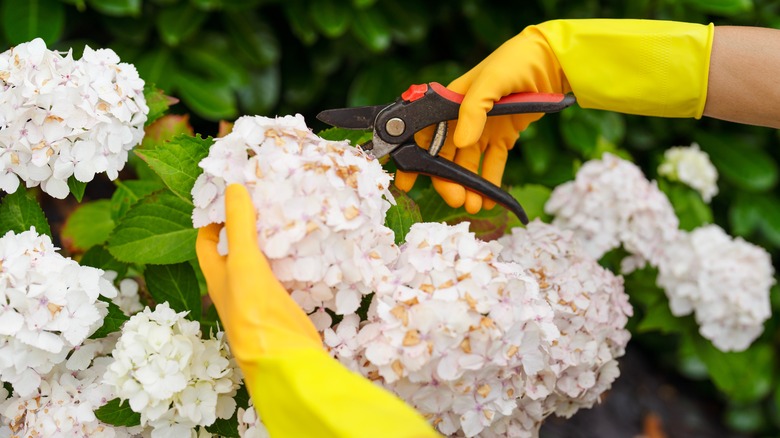The Only Types Of Hydrangeas You Should Prune In The Fall
There is something about the cool, fall weather that can make you eager to get out into your garden to tidy it up and prepare it for winter. From overseeding the lawn to dividing perennials, your fall gardening to-do list can easily get pretty long. If you have hydrangeas in your yard, pruning is definitely on that list. However, only certain types of hydrangea should be pruned in the fall.
There are two categories of hydrangea: old wood blooming hydrangeas and new wood blooming hydrangeas. Hydrangeas that bloom on new wood can be pruned in the fall. These include panicle hydrangea (Hydrangea paniculata) and smooth hydrangea (Hydrangea arborescens) varieties. Because bigleaf hydrangea (Hydrangea macrophylla) and oakleaf hydrangea (Hydrangea quercifolia) varieties bloom on old wood, pruning them during the fall can affect their flowering next year.
When hydrangeas bloom on new wood, their flowers and buds are formed in the same season. This means that you can prune them in the fall, winter, and early spring before they start putting on new growth. Old wood blooming hydrangeas form their buds in the previous season. If you prune these varieties in the fall, you will shorten the time they have to grow the wood and the buds they need for the following year. Hydrangeas that bloom on old wood should be pruned 30 to 45 days after they have finished flowering.
How to prune panicle and smooth hydrangeas
A fall prune can help tidy up your plants, but knowing how to prune hydrangeas correctly is key. Although these varieties of hydrangea can be pruned in the fall to improve their look and shape, any hard pruning should be done in late winter or spring. Your hydrangea (and their pests) will be dormant during this time, so there is less risk of pests entering them through the wounds left by pruning.
If you have panicle or smooth hydrangeas, start the fall pruning process by deadheading the plant. Although this isn't necessary for plant health, it will allow you to keep your hydrangeas looking neat and help you to more easily see what pruning is needed for shape and appearance. Then, cut away any overgrown branches, dead wood, or stems that have been damaged. As you prune your hydrangea, you can remove certain old branches to maintain shape and return it to how you want it to look. When pruning panicle hydrangeas, cut the stems just above their fat buds. This variety doesn't need a huge amount of pruning, but pruning helps to maintain its size.

